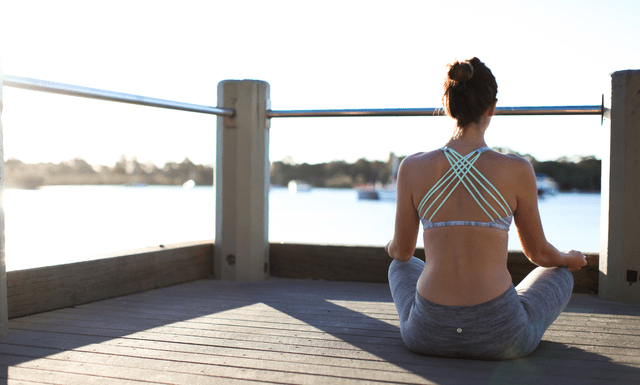Last year was a year of change–much of it unexpected–but one thing that has stayed constant is the importance of taking care of ourselves. Individuals, communities, and even companies are placing a greater emphasis on wellness, that is, our overall physical and emotional wellbeing.
“Self-care is really important in tough times, but I think we often get the self-care wrong,” says happiness expert Laurie Santos, Ph.D., professor of Yale University’s “Science of Well-Being” course. “We think it’s only about a nice bubble bath or a glass of wine alone, but the research shows that effective self-care often looks a lot more like community care.”
Although 2020 may have separated us physically, we’re still finding ways to connect with ourselves and each other, while also building stronger communities. There’s every reason for those connections to continue in 2021. This year, it’s all about the little things: implementing new habits, products, and changes to our daily routines that can have a big impact on how we feel day-to-day. Now that wellness is at the forefront of the national conversation, here are some of the predicted health trends for the coming year.
Fitness
As last year showed many of us, one need not leave their living room to achieve their fitness goals. People are searching for effective ways to work out at home, and that’s not likely to slow down. Luckily, there’s a host of products available to make exercising at home just as challenging as it would be in a gym or studio. Brands such as Peloton combine equipment with streaming classes so users have a variety of workouts at their fingertips. Newcomer Hydrow follows the same model and also happens to satisfy a bit of wanderlust: the state-of-the-art rowing machine with hundreds of workouts featuring stunning waterways around the world.
Just as tracking one’s steps every day exploded in popularity several years ago, interest in tracking other fitness metrics is currently on the rise. A bevy of wearable devices can keep tabs on everything from pulse oximetry to skin temperature to heart rate variability. Experts anticipate this data will empower individuals to take better care of themselves.
“This is described as biofeedback-assisted lifestyle interventions,” says personalized medicine physician Molly Maloof, M.D., “which means people are using these [wearables] to gain better insight into how their bodies work in real-time.”
Mental Health
While physical health is important, tending to our mental wellbeing is just as crucial. And as with physical fitness, the mental health industry is shifting its focus to in-home treatment.
Virtual therapy has grown significantly since last spring. 46 percent of U.S. patients reported using digital services to replace in-person appointments last year and 74 percent say they’re interested in using digital health services in the future. Funding for mental health startups has also skyrocketed with various companies securing $1 billion in funding during the first half of 2020.
A particularly heartening trend is the proliferation of mental health platforms that target historically underserved communities. A membership service called Real offers mental health services to non-binary and female patients. The platforms Hurdle and Exhale extends services to people of color, with the latter designed by black, indigenous women of color specifically for BIWOC.
Perhaps as a natural extension of the already growing virtual therapy space, text therapy is predicted to be one of the next major shifts in how we access mental health services. Telehealth startups such as Ginger and Talkspace offer text-based mental health services, and Talkspace reports that secure messaging with a therapist is their most popular option.
“Text hotlines work very well so it doesn’t surprise me that text therapy would emerge [next],” says psychiatrist Shakevia Johnson, MD. “We have to meet people where they are and text lines would be an awesome way to engage people.”
Nature & Wellness

There’s no doubt that time spent in nature can do wonders for our wellbeing. And as gathering in large groups continues to pose a health risk, communing with nature is a safe pastime that allows for socialization at a distance. Getaways based around hiking, biking, and rowing have seen a huge uptick and should continue to grow into 2021.
“Sadly, in travel, we’ve temporarily lost connection to other people (one of travel’s wonders), and that people connection is being replaced with nature connection, which provides unique healing and solace in a pandemic,” explains New York Times travel columnist Elaine Glusac.
And as the pandemic brought the world to a seeming standstill last spring, our environment saw some benefits in the form of improved air quality, increased biodiversity, and the return of natural soundscapes. These observed environmental benefits have sparked an interest in not just reducing our impact on the natural world, but in regenerative practices that can actually improve our natural environment. After all, our relationship with nature is a symbiotic one: we have the power to take care of our environment and it, in turn, has the power to heal us.
Given our increased awareness of how nature affects wellness and vice versa, Glusac predicts more regenerative travel in 2021, with the idea it’s not just about communing with nature and adopting sustainable practices, but it’s also about actively trying to nourish our environment as it has nourished us.





